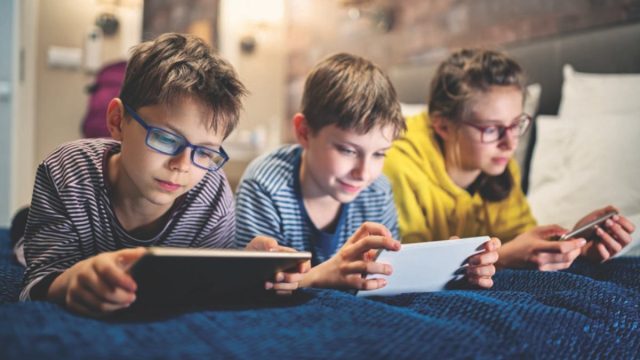The world has changed, and in this modern digital age, screens are all the rage right now. While everyone knows what kind of benefits state-of-the-art technology can offer, spending hours after hours in front of the screen can easily overthrow these perks.
This problem has become even more glaring in the case of kids. Exposed to all sorts of technology right from the moment they are born, children are growing up with devices and gadgets all around them.
If you’re a parent, your top priority should be to achieve the perfect balance between screen time and quality time. While there’s nothing wrong about kids having some screen time throughout the day, it’s still imperative for them to go outside, stay active, and establish meaningful connections with real humans in the real world instead of the virtual characters they often see and interact with.
The million-dollar question now is, how do you balance the activities for your children between the digital and real world?
Check out the following strategies that can help you ensure that your kids will have a life both on and off-screen:
Be a Good Digital Role Model
Contents [show]
You might have noticed by now how your kids love to copy everything and anything you do. Yes, that’s right. Children have this affinity to mimic the behaviors and actions of their parents.
What does it mean? Well, it only means that if you want your kid to have a balanced life in the digital and real worlds, you have to use screens carefully and mindfully. Simply put, you should model the behavior yourself.
Always be conscious of your personal screen time and show your kids how to be responsible in using technology and how to do so in moderation.
Say NO to Technology in the Bedroom
This one might get a lot of loud protests from your kids but you should make it a point that screens are off-limits in their bedroom, even more so during or before bedtime.
In case you don’t know it yet, screens emit a blue light that can disrupt the sleep patterns of children and adults alike, affecting their health in general. If your child sleeps in a separate room, ensure you monitor their cell phone or do not allow it in the bedroom at all.
Consider having the charging station set up right outside your kids’ bedroom. Doing so will help reinforce to keep their sleep environment completely free from any form of technology.
Assign Screen-Free Hours for the Whole Family
It will be great if the whole family agrees on and chooses designated times of the day or week when screens will be off-limits. These allotted times must be used instead on bonding activities such as family dinners, storytelling, or even board games.
You can encourage and nurture more meaningful interactions among all members of the family and make them less dependent on screens if you are consistent enough with the implementation of these screen-free hours.
Promote Outdoor Play
Outdoor play is critical not just for the physical but also for the mental development of children. Encourage your kids to explore nature, play some sports, or even just play outside the house in your backyard. Adding outdoor activities to your kids’ daily schedule can help counterbalance the effects of screen time and encourage a healthier lifestyle as well.
Encourage the Use of Educational Apps
As mentioned earlier, technology has its perks, and there are instances when screen time might even be necessary. You can make screen time better if you encourage your kids to stick with educational games and apps that promote critical thinking and language learning.
Lots of apps these days are made for different subjects, including language, science, math, and geography. Just make sure that you stay involved in choosing and assessing these apps to make sure that everything is aligned with the educational goals of your child.
Implement Clear and Strict Limits for Screen Time
The ultimate foundation of managing the digital consumption of children is to establish and implement reasonable, clear, and strict limits for screen time. It is highly recommended for kids 6 to 18 years old to only have more or less 1 to 2 hours spent on recreational screen time daily. Plan a weekly or daily schedule for screen time and see to it that your child and other members of the family know and understand the rules.
Give Rewards in the Form of Screen Time
Did your child finish his homework right on time? Did they complete their chores around the house without you telling them to? If they did, then, why not give them more screen time as their reward?
This approach can teach your kids about the importance of responsibility and time management while encouraging them to finish more important activities.
Cultivate Open Communication
Last but not least, it’s critical to maintain a non-judgmental and open communication line between parents and children. Talk about the essence of balance and why there are limits on screen time. Allow your kids to talk about their experiences and concerns regarding their online activities.
The Bottom Line
At the end of the day, finding a healthy and ideal balance between the digital and real-world activities of your kids should always be a collaborative effort. From being a good digital role model to cultivating open communication, you and your children can navigate the modern world safely and securely.


